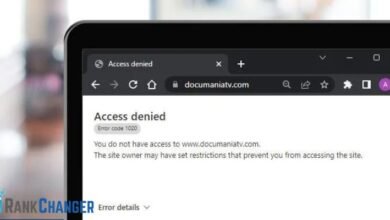The Developer’s Dilemma: Understanding & Dealing Technical Debt in App Creation

Are you struggling to make your project bug-free but despite several attempts, technical debts are emerging every now and then?
Do you understand how technical debts impact your mobile app development services in the long run?
The point is if there are minor flaws in the software development process, the code should be refactored timely. However, if the developers keep on neglecting minor bugs and delay refactoring the code, then this could have a snowball effect on the overall agility of the process.
We are going to take a deep dive into the “technical debt”. What is it, how to avoid it in app development and how to effectively manage it once done. Let’s get into these nitty-gritty details.
Part 1: Defining Technical Debt in Detail
The term “Technical Debt” is borrowed from financial debt. Technical debt is similar in concept to financial debt in a way that businesses take financial loans to gain short-term profits. Similarly, technical debt refers to accruing short-term benefits while heaping long-term costs.
Technical debt occurs in app development when teams decide to sacrifice quality for speed, either consciously or unconsciously. Businesses decide to put off some development efforts in order to achieve specific goals. The project managers could decide to write less-than-ideal code, forgo testing, or put off important upgrades, among other things. If not taken care of in real-time, technical debt can increase with time and can become more challenging to overcome.
Part 2: Forms of Technical Debt
Product Debt:
Product debt occurs when the client does not have a clear understanding of the requirements, objectives and scope at the initial stages of the project. Clients often change the requirements and add more to the requirement specifications document. Due to unclear outlines, the time to market a project is doubled, so now your project gets delayed. To avoid the product debt, you must be clear with the vision and expectations of the project.
Workable Solution:
It is crucial to build strong communication between project engineers and clients / users. The effective collaboration from the start will keep them all at the same pace. The cherry on the top would be if you share the status of the project at each developmental stage.
Design Debt:
Occurs when shortcuts are taken in the initial design phase, leading to an architecture that is difficult to scale, maintain, or extend. Designers find it hard to manage unexpected additions to the rendition.
Workable Solution:
Being a UI designer, you should try to mitigate the inconsistencies in the design work. Taking quick decisions and timely investing in the UI designing always bump up your design game. Once the app is live for pilot testing, track user analytics and reviews to observe and update project design.
Code Debt:
Code debt or tech debt can be defined as a situation when the development teams prioritize speed of development over code quality. The imperfect code will be refactored to reach better code quality. There are difficulties to refactoring code such as a challenging deployment environment, dealing with dead code, removing unneeded parameters and so on.
Workable Solution:
Developers should find a way out to manage tech debt during the earlier stages of app development. They should prioritize clean code and better code quality over quantity. This will help to have less refactoring issues. Furthermore, you’ll have a code at hand that is original, scalable, testable and readily implementable.
Testing Debt:
Testing debt arises when testing is rushed or skipped. It leads to the accumulation of undiscovered bugs that might surface later in the development process. Developers that are in test debts really need to look into their testing process loopholes.
Workable Solution:
Developers should focus on automating testing and mending broken test cases.
Documentation Debt:
When documentation is neglected or inadequately maintained, it becomes challenging for developers to understand and contribute to the project. This comes under the documentation debt. It happens when your documentation is not updated, reviewed, or improved when your software advances.
Documentation debt causes a barrier for business stakeholders and app users (for that matter). How are they supposed to understand incomplete and inaccurate information in the form of a misrepresented document? Not only this, this form of tech debt can make your app more open to bugs and security concerns.
Workable Solution:
An iterative approach to the processes of documentation and software development should be used to minimize the documentation debt. Leveraging methods including prioritizing and updating documentation in accordance with customer needs, feedback, and analytics; reviewing and refactoring to manage repetitions, bugs, or inconsistencies; and adopting clear and consistent standards.
Dependency Debt:
Arises from using outdated or poorly-maintained third-party libraries or frameworks that can become security risks or cause compatibility issues.
Workable Solution:
To avoid dependency debt from getting overwhelmed, it is better to look for compatible frameworks. Developers must be ready with extensive research about the re-usable stuff before they start the development process.
Part 3: How to Manage Technical Debt?
Acknowledge and Track:
The first step in managing technical debt is recognizing its presence. Development teams should actively monitor their projects for signs of technical debt and document instances where compromises are made.
Prioritize and Plan:
Not all technical debt is equal. Prioritize which areas need attention based on factors like the impact on user experience, security, or the potential for future scalability issues.
Refactoring:
Refactoring is an important strategy to effectively manage technical debt. You should allocate some resources and time to refactor code on a regular basis. Refactoring is the process of reorganizing old and existing code to make it better, legible, and easy to structure in the long run. In this way, there are less chances of businesses to accrue debt over time.
Automated Testing:
Automated and agile testing methodologies can easily catch bugs early in the development cycle. Incorporate effective testing techniques to timely combat the risks of any new technical debt in the app development process.
Continuous Integration and Deployment:
To automate the build, testing, and deployment processes, embrace CI/CD pipelines. This fosters frequent, smaller upgrades that lower the danger of technical debt and expedites development.
Documentation and Knowledge Sharing:
Maintain comprehensive documentation and encourage knowledge sharing within the team. Clear documentation makes it easier for developers to understand the codebase and contribute effectively.
Regular Updates:
Stay vigilant about updating dependencies, frameworks, and libraries to ensure security patches and compatibility enhancements are incorporated into your app.
Part4: Final Words
Software development projects will inevitably incur technical debt, but development teams may lessen its detrimental effects by being aware of its several manifestations and implementing proactive management techniques. Finding a balance between swiftly releasing features and keeping a stable, scalable, and manageable codebase is crucial. App developers may efficiently manage technical debt and ensure the success and sustainability of software projects by giving priority to refactoring, testing, documenting, and adhering to best practices.
Meta Description:
Do you want to tame technical debts in your app development? Look no further, your quest to balance debts ends here. This article explains forms, & tips to manage tech debts.





